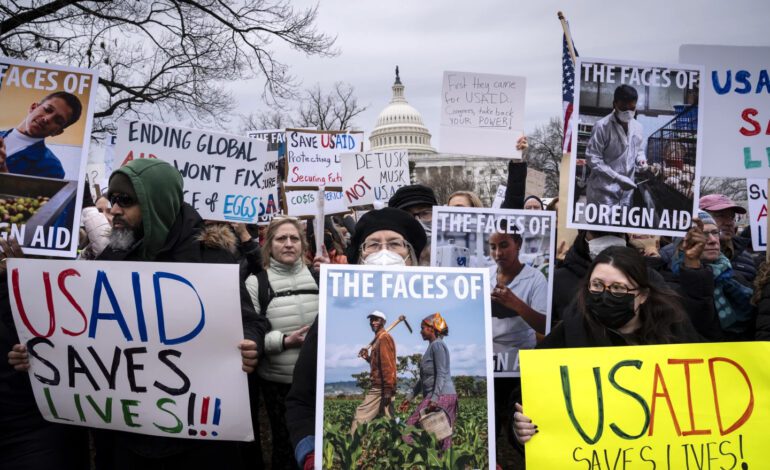Foreign aid is an easy target when people say they want to cut government spending. It makes sense that we should take care of Americans who are struggling before we share resources with other countries. Charity begins at home, as they say.
That may help explain why President Trump and his adviser Elon Musk, when they set out to dramatically shrink the federal government, started by dismantling the U.S. Agency for International Development, the primary entity for delivering foreign assistance.
But slashing foreign aid is wrong-headed for several reasons. First, foreign aid is a key tool of foreign policy. It’s not just charity. It’s how we exercise “soft power”, maintaining relationships and strengthening our influence around the world. It includes not only food, housing and disaster assistance, but promotion of democracy and human rights. It also benefits our own economy by expanding markets for our farmers and manufacturers.
USAID was created in 1961, under President John F. Kennedy, partly to compete with the Soviet Union at the height of the Cold War. Today, as then, if we don’t invest in foreign aid, our rivals will. As America turns inward, China sees openings to extend its influence.
Second, we should provide aid because it’s the right thing to do. We are, by many measures, the wealthiest and most powerful country in history. Helping people who are in need aligns with our values as a nation. We can’t fix all the world’s problems, but we can and should be a force for good.
Finally, the appeal of cutting foreign aid derives from a series of myths. The most persistent is that we spend a lot more money on foreign aid than we do. Polls find that a plurality of Americans think foreign aid accounts for between one-fourth and one-third of government spending. In fact, it’s only about 1 percent.
It’s also common to hear that other nations should take on a larger share of providing foreign aid. It’s true that the United States provides more aid than any other nation, but that’s primarily because of our size and wealth. According to the Organization for Economic Cooperation and Development, we spend 0.24 percent of our gross national income on overseas aid. That’s near the bottom of OECD countries, far less than Norway, Germany and the United Kingdom.
A common criticism is that foreign aid is squandered by corrupt or unstable governments. Yes, we should do our best to get aid to people who need it most. However, most American foreign assistance is delivered by nonprofits, including faith-based organizations, and by partnerships with businesses. Only a small share passes through foreign governments.
There are also questions about whether the hundreds of billions of dollars spent on foreign aid has been effective. Are we creating sustainable progress? Are we making people dependent on aid? These are legitimate concerns, but foreign aid has accomplished a lot. The money that we have spent has saved millions of people from hunger, provided relief from droughts and floods and reduced the incidence of deadly diseases, sometimes dramatically.
Shutting down USAID will be a disaster, especially for the people who rely on its programs. According to the New York Times, American aid saves 1.65 million lives per year via HIV and AIDS prevention and treatment, prevents 500,000 deaths by delivering vaccines and saves 550,000 people from starvation. It prevents hundreds of thousands of deaths from malaria and tuberculosis. These aren’t just statistics; they are people, many of them children.
None of this is to suggest that foreign aid should be off-limits for criticism. Even supporters say that aid programs can be prone to waste and inefficiency. Those and other problems should be identified and addressed. But shutting down aid will devastate vulnerable people, and it will harm America. Foreign aid should be reformed, not eliminated.
—Lee Hamilton is a distinguished scholar at the IU Hamilton Lugar School of Global and International Studies and senior advisor for the Indiana University Center on Representative Government. He was a member of the U.S. House of Representatives for 34 years.






Leave a Reply